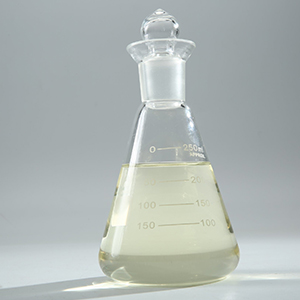
Formalin
Formaldehyde Solution (35 per cent), Ph Eur
CH2O -- 30.03 -- 50-00-0
Action and use: When suitably diluted, used in the treatment of warts.
DEFINITION
Content: 34.5 per cent m/m to 38.0 per cent m/m of formaldehyde (CH2O; Mr 30.03). It contains methanol as stabiliser.
CHARACTERS
Appearance: Clear, colourless liquid.
Solubility: Miscible with water and with ethanol (96 per cent). It may be cloudy after storage.
IDENTIFICATION
A. Dilute 1 ml of solution S (see Tests) to 10 ml with water. To 0.05 ml of the solution add 1 ml of a 15 g/l solution of chromotropic acid sodium salt, 2 ml of water and 8 ml of sulphuric acid. A violet-blue or violet-red colour develops within 5 min.
B. To 0.1 ml of solution S add 10 ml of water. Add 2 ml of a 10 g/l solution of phenylhydrazine hydrochloride, prepared immediately before use, 1 ml of potassium ferricyanide solution and 5 ml of hydrochloric acid. An intense red colour is formed.
C. Mix 0.5 ml with 2 ml of water and 2 ml of silver nitrate solution in a test-tube. Add dilute ammonia until slightly alkaline. Heat on a water-bath. A grey precipitate or a silver mirror is formed.
D. It complies with the limits of the assay.
TESTS
Solution S: Dilute 10 ml, filtered if necessary, to 50 ml with carbon dioxide-free water.
Appearance of solution: Solution S is colourless.
Acidity: To 10 ml of solution S add 1 ml of PhPh solution. Not more than 0.4 ml of 0.1 M sodium hydroxide is required to change the colour of the indicator to red.
Methanol: To pass Gas chromatography.
Sulphated ash: Maximum 0.1 per cent, determined on 1.0 g.
ASSAY
Into a 100 ml volumetric flask containing 2.5 ml of water and 1 ml of dilute sodium hydroxide solution, introduce 1.000 g of the solution to be examined, shake and dilute to 100.0 ml with water. To 10.0 ml of the solution add 30.0 ml of 0.05 M iodine. Mix and add 10 ml of dilute sodium hydroxide solution. After 15 min, add 25 ml of dilute sulphuric acid and 2 ml of starch solution. Titrate with 0.1 M sodium thiosulphate.
1 ml of 0.05 M iodine is equivalent to 1.501 mg of CH2O.
Packaging and storage: Preserve in tight containers, and preferably store at a temperature not below 15C.
Labeling: The label of bulk containers of the Solution directs the drug repackager to demonstrate compliance with the USP Assay limit for formaldehyde of not less than 37.0%, by weight, immediately prior to repackaging.
Identification:
A: Dilute 2 mL with 10 mL of water in a test tube, and add 1 mL of silver-ammonia-nitrate: metallic silver is produced either in the form of a finely divided, gray precipitate, or as a bright, metallic mirror on the sides of the test tube.
B: Add 2 drops to 5 mL of sulfuric acid in which about 20 mg of salicylic acid has been dissolved, and warm the liquid very gently: a permanent, deep-red color appears.